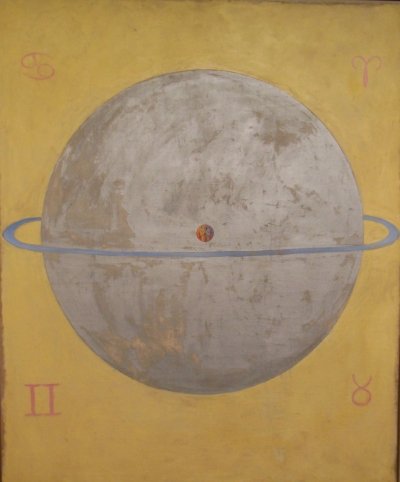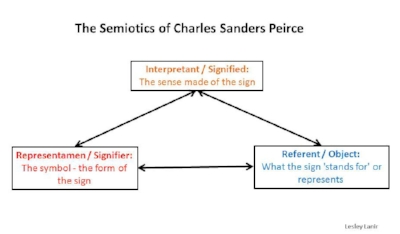Many may not ever have heard of Charles Sanders Peirce (1839-1914) but he might just be the most original and the most versatile intellect the US has so far produced. He was an innovative force in philosophy and mathematics, developed pragmatism as a method of research, but considered himself, first and foremost, a logician. He was the founder of semiotics, the science of signs and symbols, i.e. how meaning is created and communicated. It is his invention of the triadic sign system that will interest us here. Getting acquainted with this method we might get a better understanding how astrology works.
What is a sign? According to Peirce any thing or phenomenon may be considered a sign. It is always something real, like being able to be noticed by us, we can see it, hear it, touch it. A sign always represents something else, on object (smoke/fire, siren/alarm, flag/country, yawning/boredom etc). The third link is the mediator who brings sign and object into relation, who makes sense of it. All and every experience we have can be traced back to this triad. We are generally just not aware of this intricacy.
As to astrology: Basically, all we ‘have’ is the movement and appearance of the planets and their position to each other. We are not looking at the planet per se (the task of physicists and astronomers) but to some of its singular quality. In Peirce-speak, its qualia. This the interpreter (astrologer) will relate it to its source, its underlying ground, its object, which could be the archetypal realm of the collective unconscious. We must bear in mind that the object can never be accessed by an actual personal experience but is always already mediated by signs. The astrologer’s task is to make sense of the signs perceived and relate them to flesh and blood human experiences in the phenomenal world. For instance, Mars appearing reddish to the eye and with its forceful zodiacal pace calls up the archetype of the Warrior which can be experienced in countless forms (i.e. willful, aggressive, expansive, dynamic). It can also be seen as the sign for the primordial force of cutting/separation/dissonance - in contrast to the corresponding primordial force of binding/union/cohesion as represented by Venus with her brilliant radiance, mild and soothing to behold when perceived as evening or morning star.
We have to keep in mind that a sign in its triadic form is only a sign when interpreted. For those who do not notice a sign nothing will come to mind. For astrology the planetary spectacle of our solar system is regarded as a system of signs to be interpreted by those who see it. That does not mean that every hunch one has will reveal something true, for any research has to be backed by logic and method. Peirce was a pragmatist, and the ultimate test for any interpretation was that it proved itself. It had to work. And that is the test for astrology, too.
(expanded version, October 28)
(See also 'The Astrological Text' in the Blog)
Charles Sanders Peirce (1839-1914)



